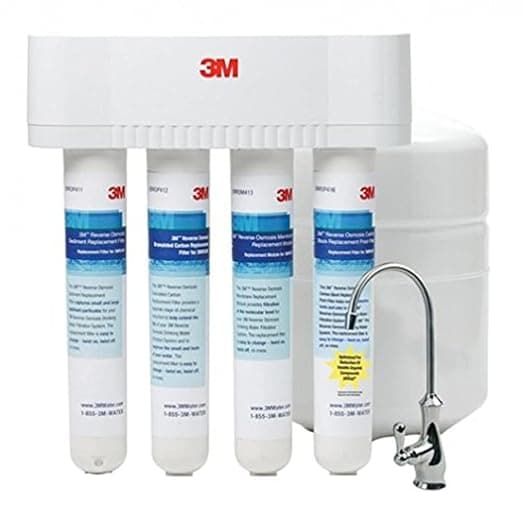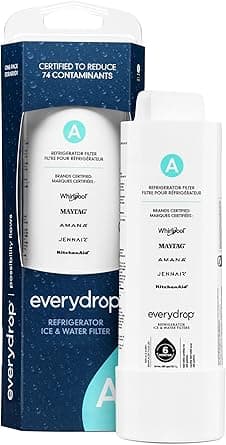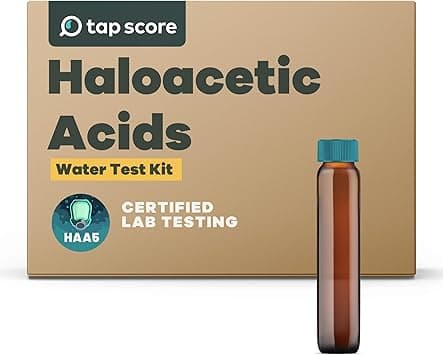Lakeland Tap Water Quality Report
Lakeland's water has 7 contaminants above EPA MCLGs. We recommend using a certified water filter.
Utility
LAKELAND WATER SYSTEM
People Served
2,700
MCL Violations
0
Last Updated
Jul 13, 2022
Is Lakeland Tap Water Safe to Drink?
Lakeland's water has 7 contaminants above EPA health-based guidelines. We strongly recommend using a certified water filter to reduce exposure to these contaminants. Check our filter recommendations below for NSF-certified options that can remove the specific contaminants found in Lakeland's water.
The data below shows test results from LAKELAND WATER SYSTEM, which serves 2,700 people in the Lakeland area. Water quality testing is conducted regularly and reported to the EPA. This report was last updated Jul 13, 2022.
Lakeland Water Quality Test Results
Key Water Quality Metrics
Contaminants Detected
⚠️ Contaminants Above EPA MCLG (7)
Arsenic
What is Arsenic?
Naturally occurring element that has both inorganic and organic forms
Health Effects
The EPA drinking water standards for arsenic are based on adverse effects to the cardiovascular, pulmonary and liver systems in drinking water with inorganic arsenic, as well as an increased risk of cancer. Long term health effects of total arsenic in drinking water include bladder, GI tract, kidney, liver, lung, pancreas and skin cancer, cardiovascular effects, pulmonary and gastrointestinal effects, ocular, immunological, neurological and reproductive effects. Arsenic found in epidemiological studies include developmental effects, socioeconomic and genotoxicity.
Affected Organs
Common Sources
Dichloroacetic Acid (DCA)
What is Dichloroacetic Acid (DCA)?
Member of haloacetic acids (HAAs) that form as byproducts when chlorine reacts with organic matter
Health Effects
Health protective benchmarks for DCA are based on evidence of increased cancer risk and liver toxicity observed in animal studies. Adverse effects to the male reproductive system have also been associated with elevated levels of DCA in animal studies. The EPA classifies DCA as a likely human carcinogen.
Affected Organs
Common Sources
Trichloroethylene
What is Trichloroethylene?
Solvent that is used primarily for metal degreasing applications, as an intermediate for the manufacture of other chemicals, as an industrial solvent, and in dry cleaning and textile operations. TCE is the most commonly reported organic contaminant in drinking water and is readily volatile, thus all routes of exposure (ingestion, inhalation and dermal) are relevant if one is exposed via drinking water. The EPA has deemed trichloroethylene as 'likely to be carcinogenic to humans' by all routes of exposure based on the association between TCE exposure and kidney cancer. At low concentrations, TCE can adversely impact the immune system and development outcomes.
Health Effects
Health protective levels for trichloroethylene in drinking water have been set by the EPA based on TCE's carcinogenicity (specifically kidney cancer). Both human and animal studies show that the immune system and fetal development are sensitive endpoints with respect to TCE exposure. Acute exposures unlikely encountered in drinking water can result in effects to the central nervous system, kidney, liver, and male reproductive system.
Affected Organs
Common Sources
Chlorine (Total)
What is Chlorine (Total)?
Chlorine is a chemical element with the symbol Cl and atomic number 17. It is a yellow-green gas at room temperature and is a strong oxidizing agent. Chlorine is commonly used in water treatment to kill bacteria and other pathogens, making water safe for drinking.
Health Effects
Exposure to chlorine can cause respiratory issues, skin irritation, and eye irritation. Ingesting high levels of chlorine can lead to gastrointestinal distress and other serious health problems.
Affected Organs
Common Sources
Radium 228
What is Radium 228?
Radium-228 is a radioactive isotope of radium that occurs naturally in uranium and thorium ores. It is part of the decay chain of uranium-232 and has a half-life of 5.75 years. Radium-228 can be found in groundwater and can contaminate drinking water supplies.
Health Effects
Exposure to radium-228 can lead to an increased risk of cancer, particularly bone cancer, due to its radioactive properties. Long-term exposure can also affect the kidneys and other organs.
Affected Organs
Common Sources
Trichloroacetic Acid (TCA)
What is Trichloroacetic Acid (TCA)?
Member of haloacetic acids (HAAs) that form as byproducts when chlorine reacts with organic matter
Health Effects
Health protective benchmarks for TCA in drinking water have been developed based on liver toxicity and carcinogenicity observed in animal studies. EPA has classified TCA as a possible human carcinogen. Developmental toxicity has also been associated with exposure to TCA based on evidence from animal studies.
Affected Organs
Common Sources
Fluoride
What is Fluoride?
Naturally occurring mineral in the environment and an essential element of tooth enamel
Health Effects
Elevated levels of fluoride in drinking water can lead to dental fluorosis in children, which is the discoloration and molting away of tooth enamel. Evidence on low-dose, chronic exposure to fluoride is not definitive but has been indicated as having potential neurological impacts. Studies have clearly established that long-term exposure to high doses of fluoride, higher than typically found in US drinking water, can have adverse effects on skeletal tissue (bones and teeth), which may cause higher risk of bone fractures in seniors. Skeletal fluorosis is a debilitating condition caused by high fluoride exposure during bone development in children.
Affected Organs
Common Sources
Understanding the Data
This data comes from your local water utility testing. The bar charts compare detected levels against EPA's Maximum Contaminant Level Goal (MCLG). Contaminants above the MCLG are shown by default and may require filtration. All other tested contaminants are within safe levels and can be viewed by expanding the section above.
Recommended Water Filters for Lakeland
Based on Lakeland's water quality data, these NSF-certified filters are recommended to remove contaminants above EPA MCLGs.

Solventum Purification Inc.
3MRO401
NSF Certified:
Daily Production
11.48 gpd
Removes 15 contaminants:
Arsenic, Barium, Cadmium, Chromium (Total), Chromium (VI) +10 more

Solventum Purification Inc.
3MRO301
NSF Certified:
Daily Production
11.48 gpd
Removes 15 contaminants:
Arsenic, Barium, Cadmium, Chromium (Total), Chromium (VI) +10 more

Whirlpool Corporation
W11569861
NSF Certified:
Capacity
1001 gal
Filter Life
3 mo
Flow Rate
0.52 gpm
Removes 22 contaminants:
1,2 Dichlorobenzene, 1,2,4 Trichlorobenzene, 1,4 Dichlorobenzene, 2,4-D, Asbestos +17 more
![CL10RO T/33[2]](/_next/image?url=https%3A%2F%2Fm.media-amazon.com%2Fimages%2FI%2F41pxMA2nbGL._AC_SY355_.jpg&w=3840&q=75)
Omnipure Filter Co.
CL10RO T/33[2]
NSF Certified:
Capacity
1500 gal
Filter Life
5 mo
Flow Rate
0.5 gpm
Removes 3 contaminants:
Chlorine (Free), Chlorine (Total), Chlorine Dioxide
Verify Your Water Quality with Independent Testing
With 7 contaminants above EPA health guidelines, independent laboratory testing provides a second opinion and can track changes over time.

SimpleLab
Advanced Home Water Test
$369
Most comprehensive home water test including all standard tests plus additional parameters for ultimate peace of mind.

SimpleLab
Standard Home Water Test
$232
Comprehensive water analysis testing over 200 contaminants including bacteria, heavy metals, and chemical compounds.

Tap Score
Haloacetic Acids (HAA9) Test
$275
Tests for disinfection byproducts formed when chlorine reacts with organic matter in water treatment.
Frequently Asked Questions About Lakeland Tap Water
Lakeland's water has 7 contaminants above EPA MCLGs. We strongly recommend using a certified water filter to reduce exposure to these contaminants. Check our filter recommendations below for NSF-certified options that can remove the specific contaminants found in Lakeland's water.